Katerina Meidanis

The Conflict Resolution Table
The Conflict Resolution Table focuses on the impact that furniture design has on social relationships, specifically on bringing people together. I created a conflict resolution table for elementary students in 3rd grade. One of the main goals of elementary school is to educate children on behavior skills. However, there are ineffective forms of discipline enforced in schools such as suspension and zero tolerance policies. A better way of disciplining children is to teach them respectful communication through cooperation, perspective taking, and understanding emotions. To do this, I created an interactive table that has eight conflict resolution questions and engaging drawing activities engraved on it. The table top turns to reveal each step individually. This table would be used as an alternative discipline method when two 3rd grade students get into an argument.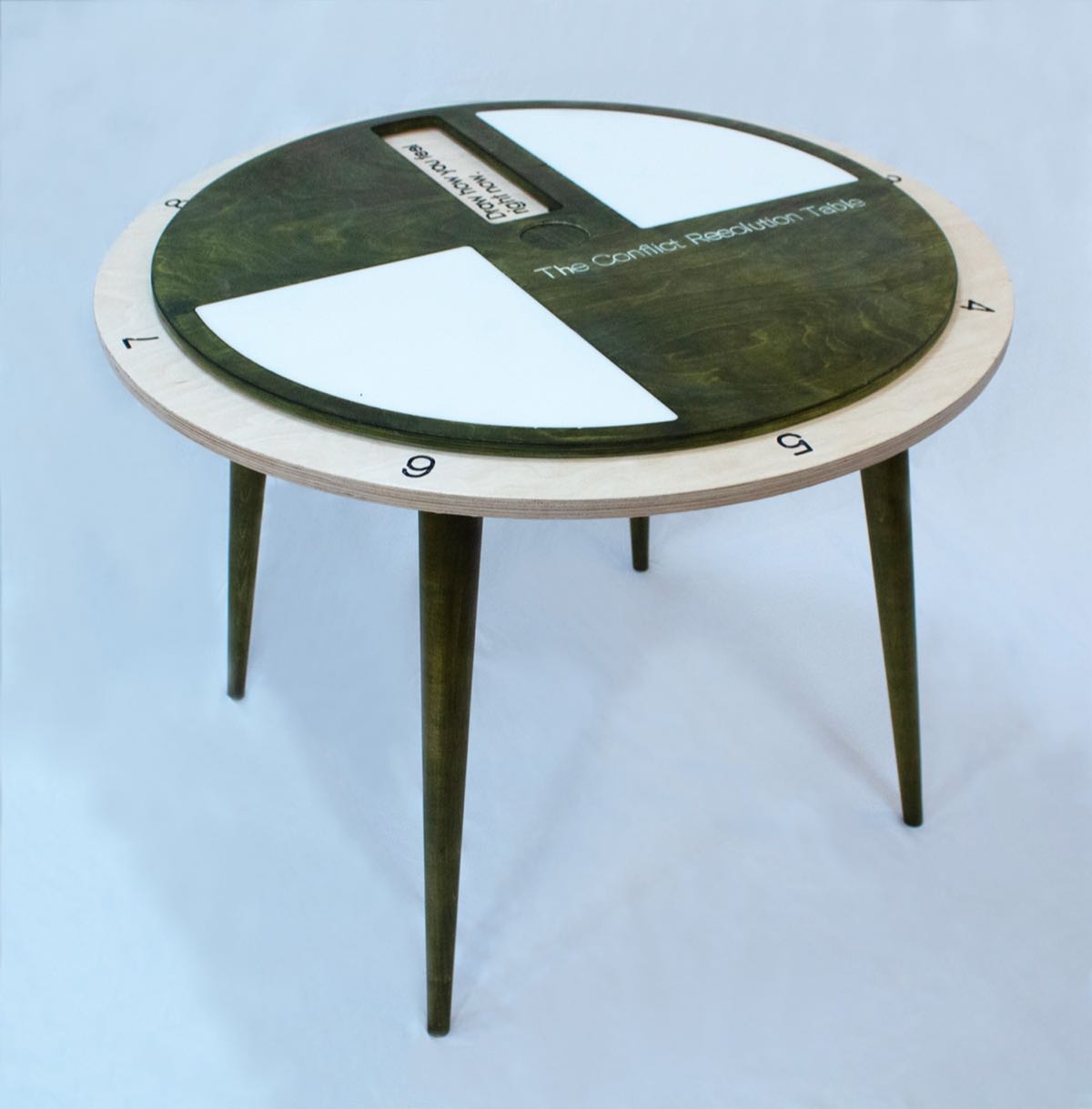
Conflict Resolution Table, 2020
Birch, acrylic, 25 inches in height
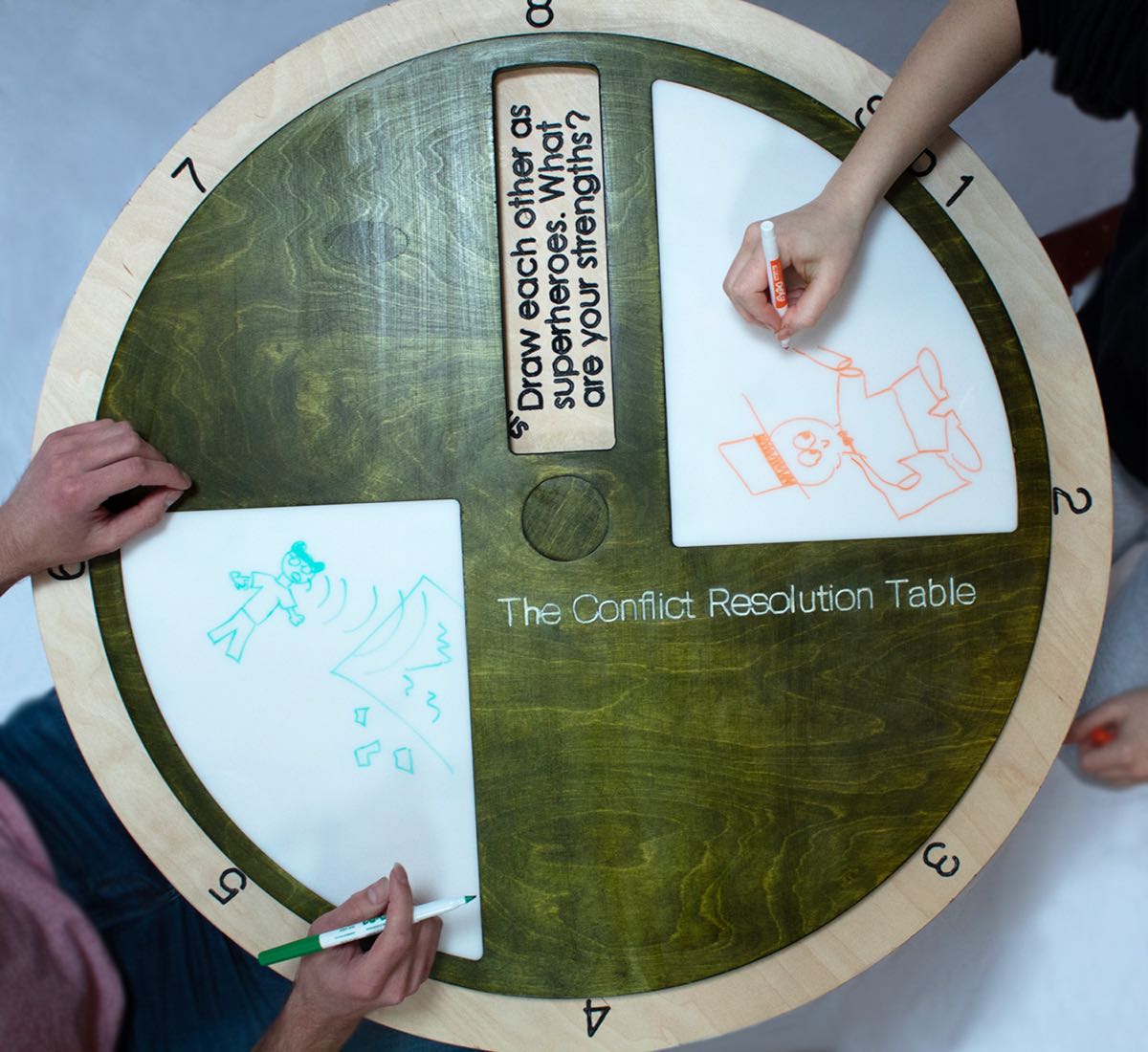
The steps are labelled on the edge of the table. Students start on step 1 and go through each step to work out their conflict. The table also features two dry erase boards for children to use for the drawing activities.
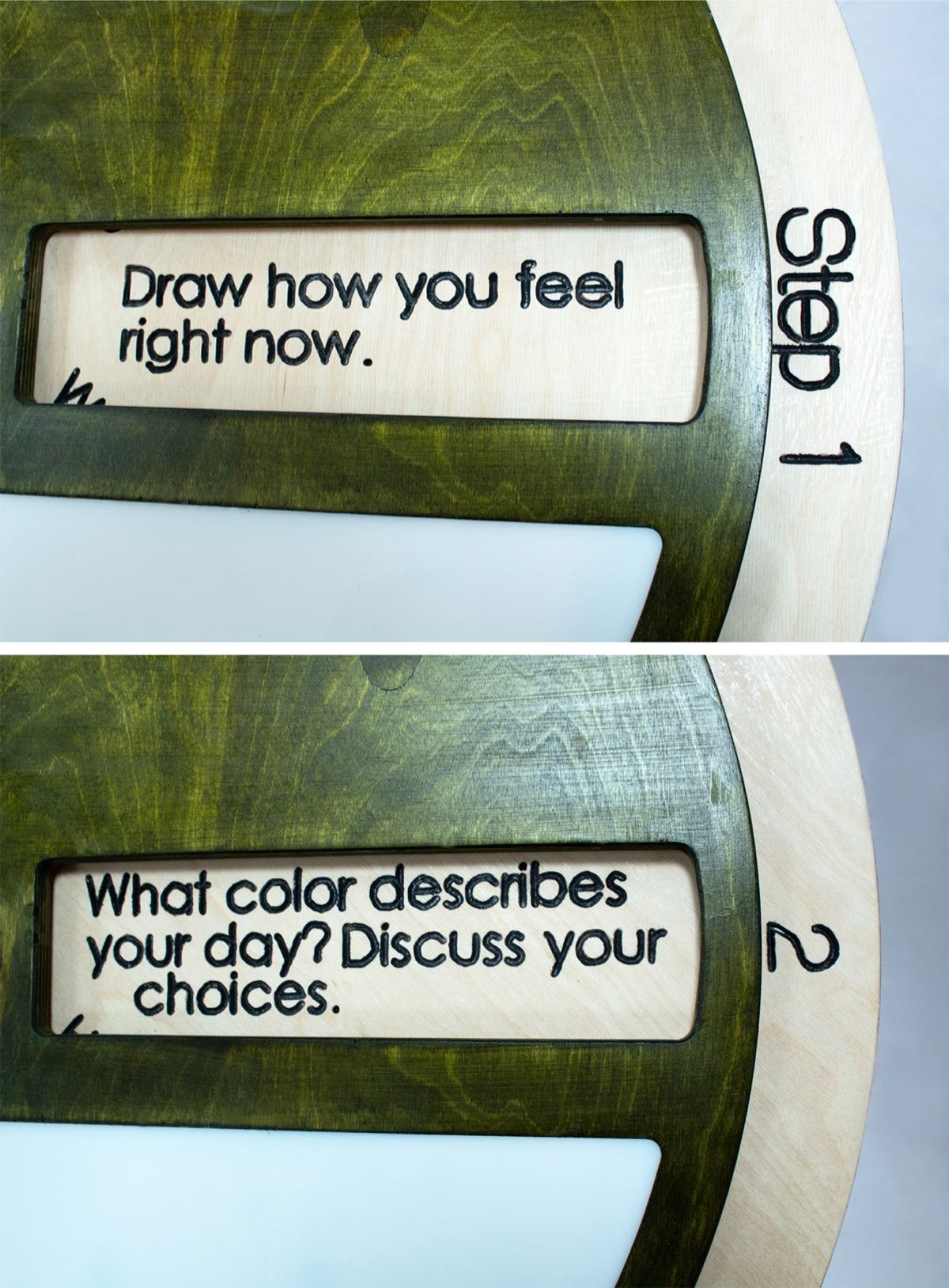
Step 1 is a drawing activity that is meant to help students learn how to express their feelings and think in a visual way.
The goal of step 2 is to encourage students to think about color theory.
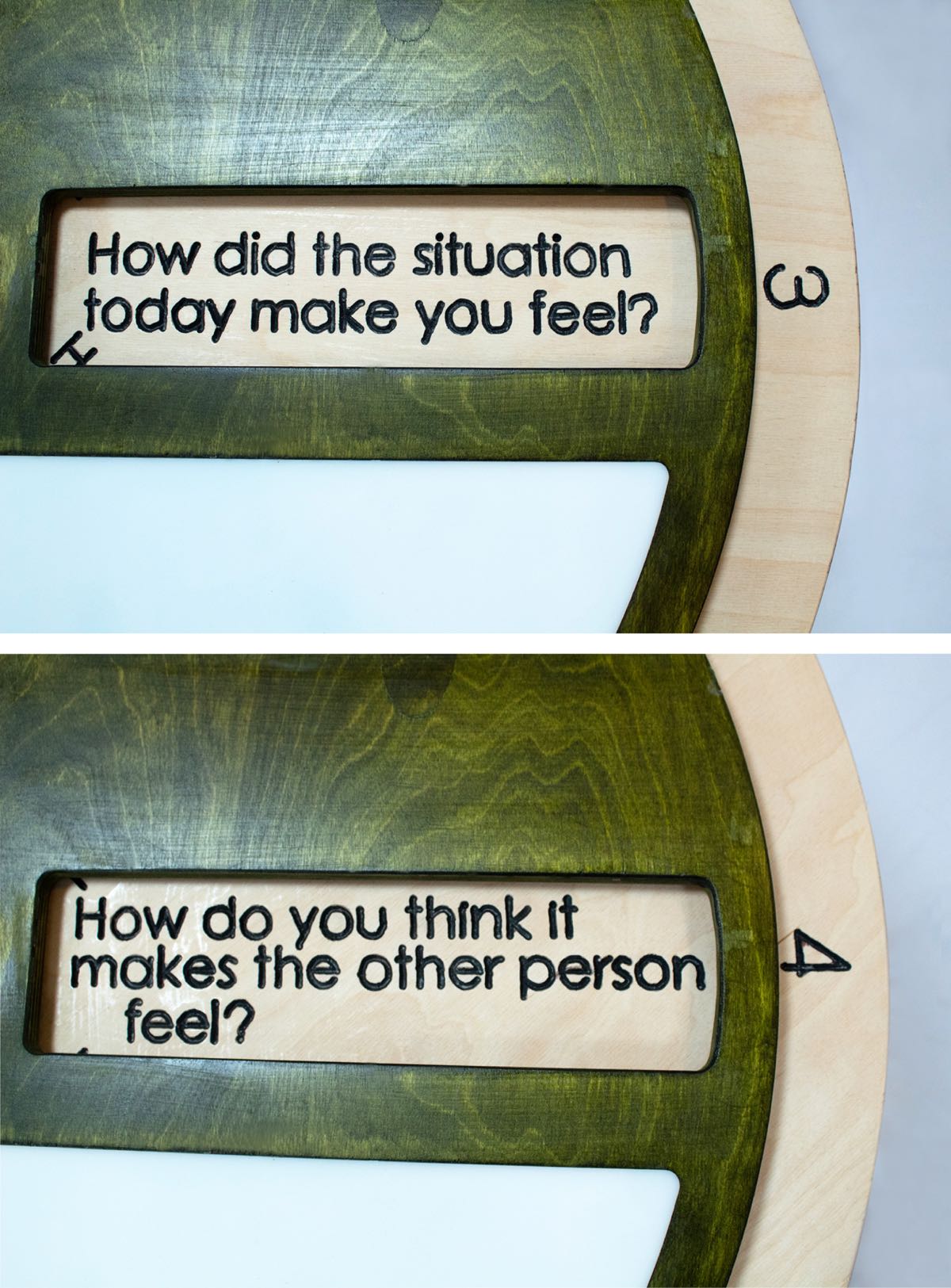
Steps 3 and 4 are conflict resolution questions I gathered based on my primary and secondary research.
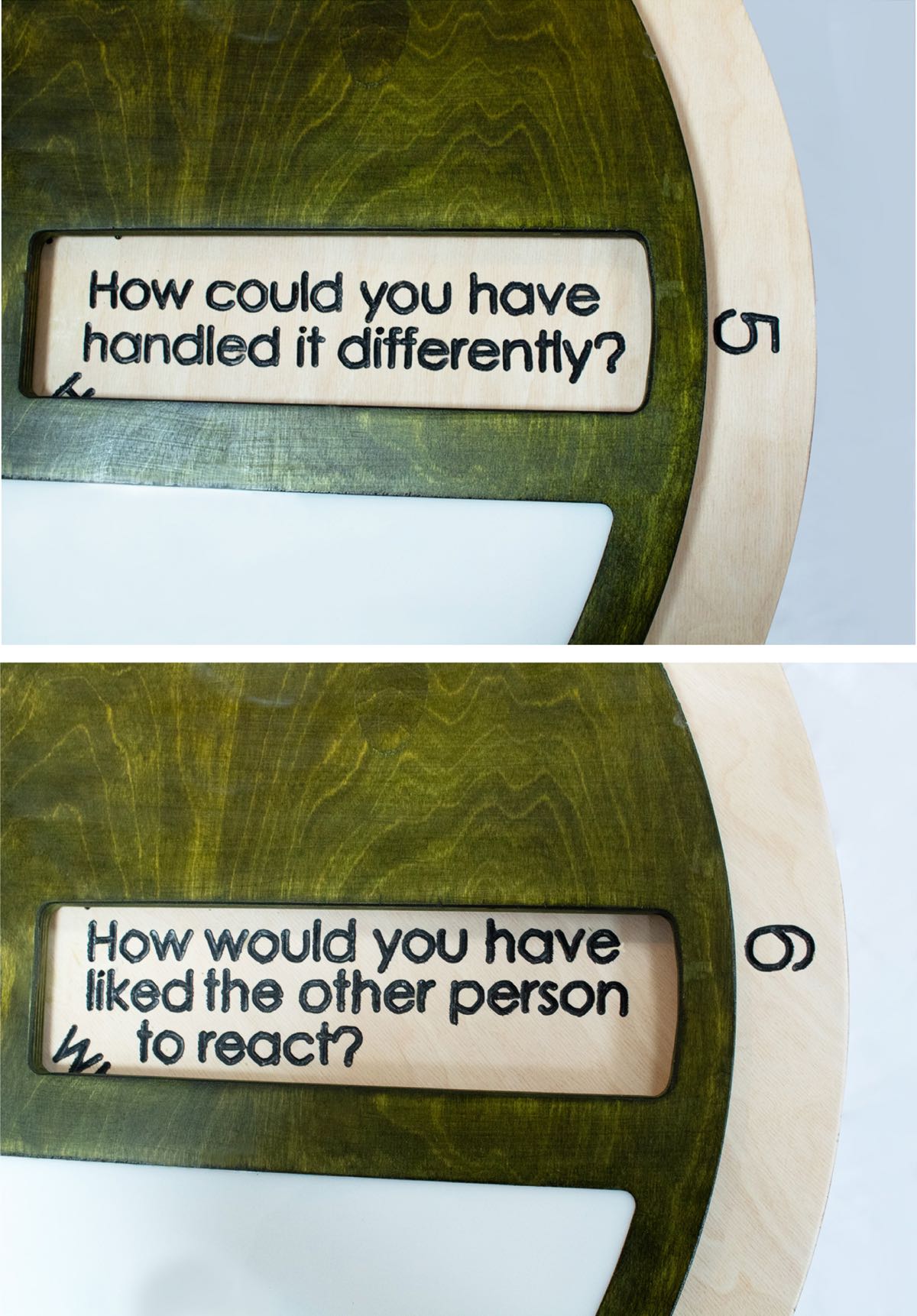
Steps 5 and 6 are also conflict resolution questions based on my primary and secondary research.
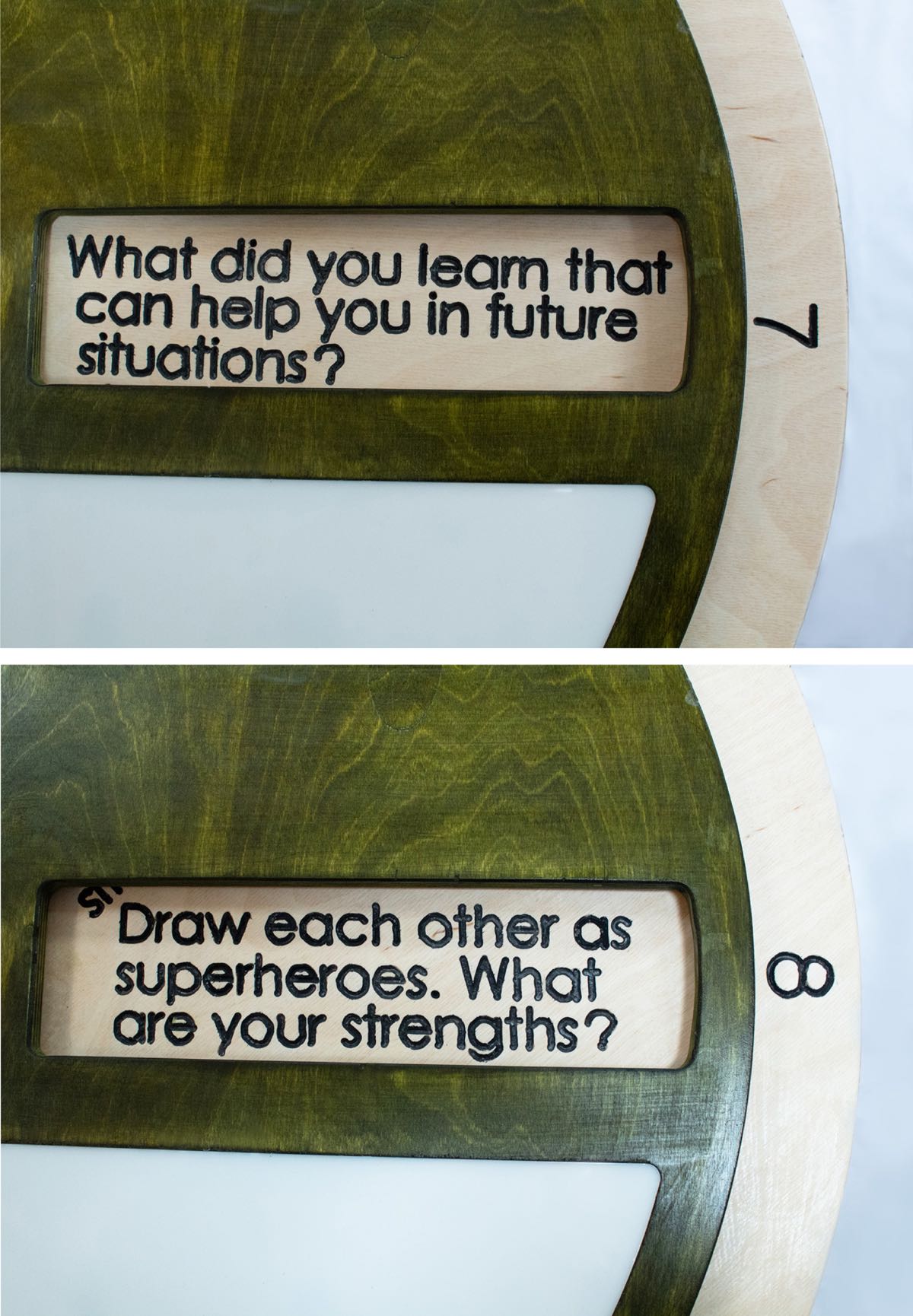
Step 7 is a question that helps students think about their future actions.
The goal of step 8 is to promote cooperation through drawing each other as superheroes, a topic that many children identify with.
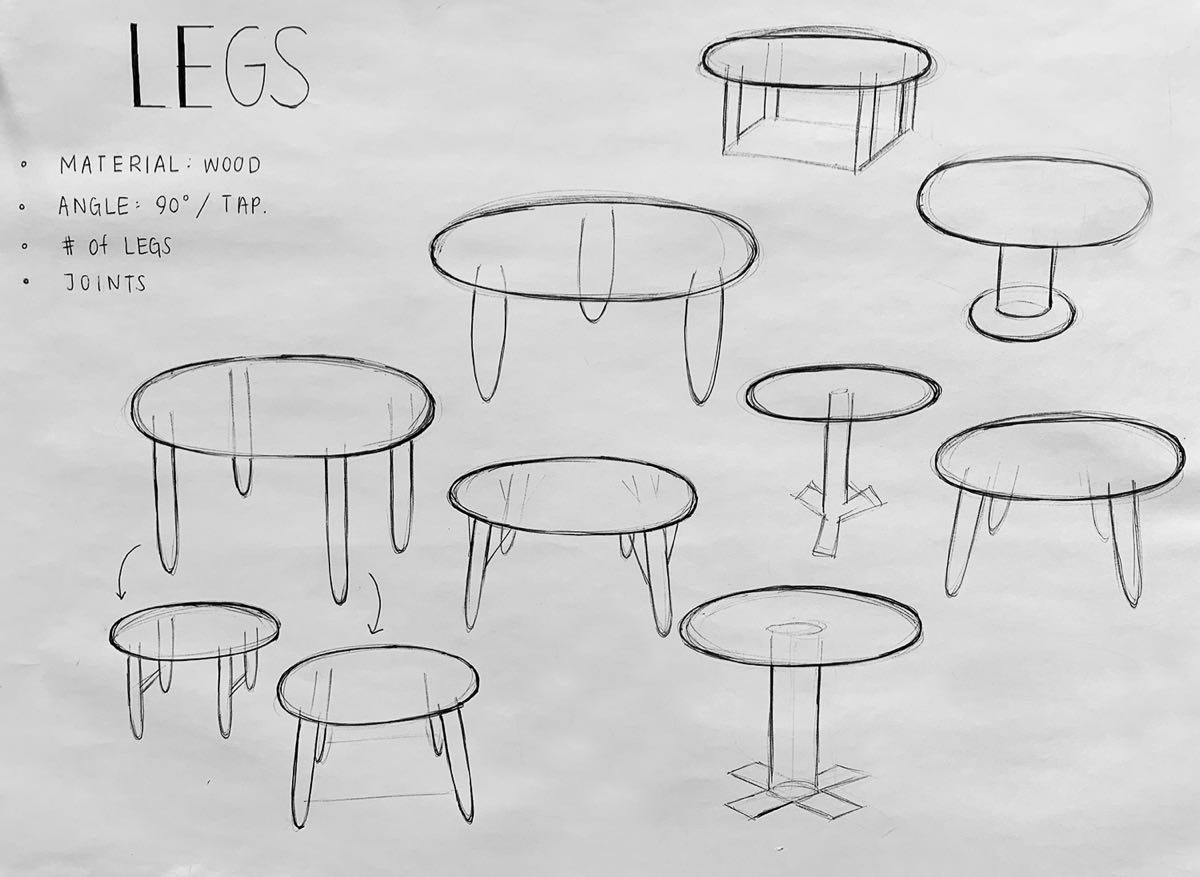
Fast sketches of different table legs as part of my ideation process.
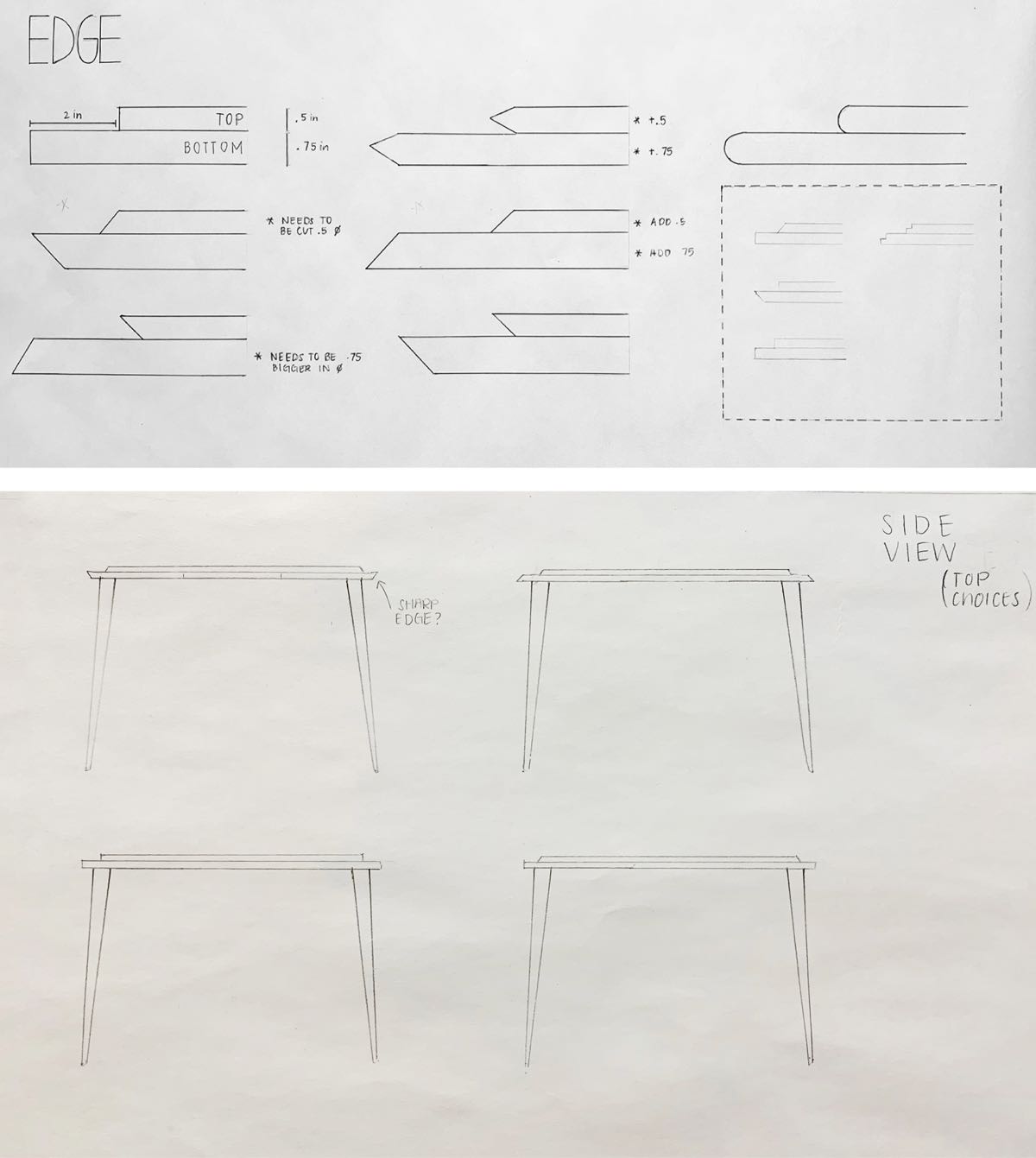
Edge ideation
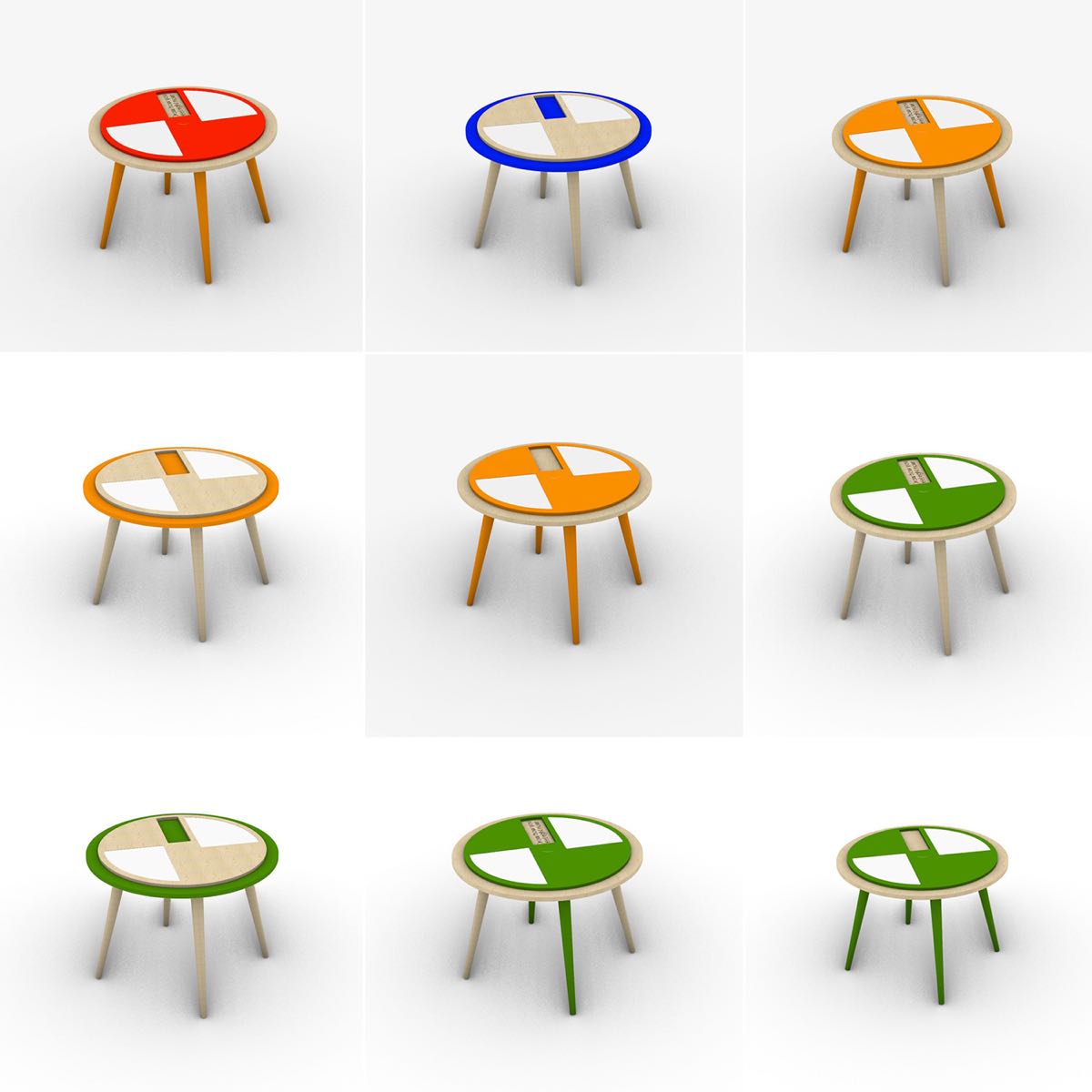
Exploration of color using 3D modeling
